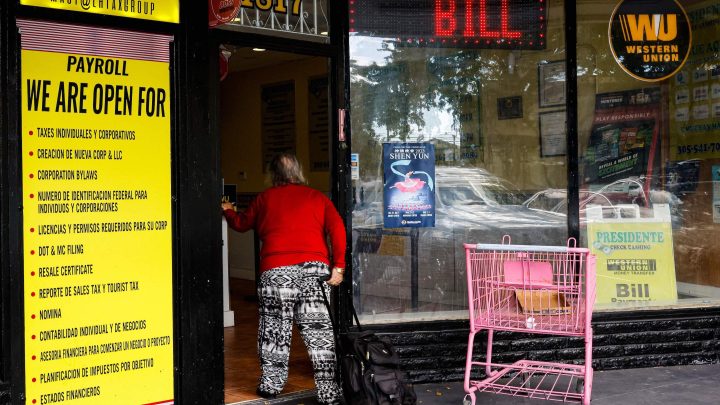
Remittances grew again in 2023

Remittances to low- and middle-income countries have grown this year, about 3.8% globally. Some countries in Latin America and the Caribbean have seen much bigger increases of around 8%, according to new data from the World Bank.
The countries that received the most amount of money from remittances this year are India ($125 billion), Mexico ($67 billion), China ($50 billion), the Philippines ($40 billion), and Egypt ($24 billion).
The country that’s the biggest source of remittances? The U.S.
Given all the turmoil of the last few years — a global pandemic, recession, inflation — Dilip Ratha at the World Bank says it’s been surprising to see remittances increase as much as they have.
They dropped off slightly in 2020, but since then, “In 2021, 2022, remittances have surged,” he said. By more than 10% in 2021, 8% in 2022 and now, this year, just under 4%.
One of the main reasons remittances have grown so much recently is how quickly the labor market and the economy in the U.S recovered after COVID.
“Generally remittances are actually driven by conditions where the migrant is working,” said Pia Orrenius at the Federal Reserve Bank of Dallas. “We saw in a recent study that employment growth in the construction sector explained two-thirds of the increase in remittances to Mexico during the pandemic,” she said.
In the last couple of years, Manuel Orozco at the Inter-American Dialogue says rising prices have also driven many people to send more money back home to family in countries where inflation soared.
“Migrants have basically, to some extent, helped compensate those realities by sending a little bit more than they usually sent,” he said.
Remittances don’t just help individual families. Ratha at the World Bank says they also make a huge difference to local economies, and to countries.
In Tajikistan, remittances make up almost half of GDP. In Samoa, Lebanon and Nicaragua, it’s between a quarter and a third of GDP.
“It’s incredible how important the small, small sums of money become when they are added up for a country,” Ratha said.
This year, all those small amounts have added up to $669 billion.
More than the total amount of foreign direct investment and development assistance combined.
There’s a lot happening in the world. Through it all, Marketplace is here for you.
You rely on Marketplace to break down the world’s events and tell you how it affects you in a fact-based, approachable way. We rely on your financial support to keep making that possible.
Your donation today powers the independent journalism that you rely on. For just $5/month, you can help sustain Marketplace so we can keep reporting on the things that matter to you.

















